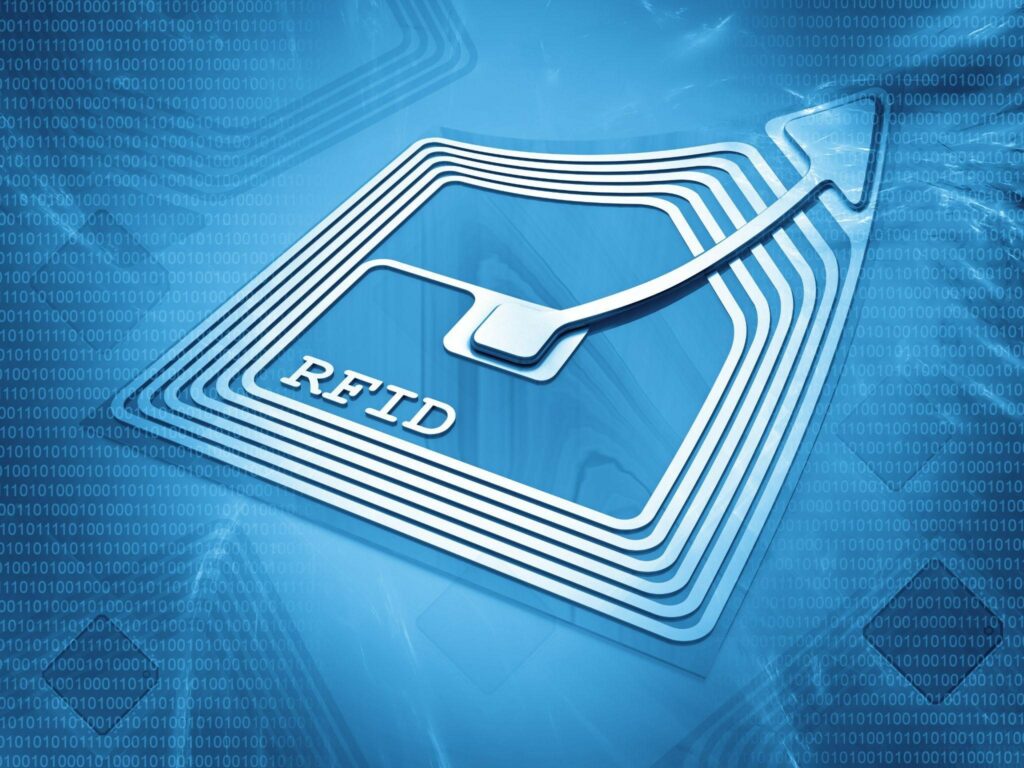From that legendary day in the 1880s when Heinrich Hertz proved that radio waves exist, inventors, scientists, and curious minds have been driven to find ways to use the discovery to enhance our lives. Guglielmo Marconi invented a radiotelegraph (and later the common radio we know today). Today, radio telescopes help us better understand the cosmos, for air traffic control, and even types of toys. Radio waves have so many useful applications and are uniquely suited to tracking things over long distances. So, it was only a matter of time before we found a way to incorporate them into logistics and tracking. Modern technology makes everything from tracking to receiving a breeze. Of course, that doesn’t mean it doesn’t still have some major challenges to overcome once in a while. Radio frequency identification tags help overcome some of these challenges and make tracking easier than ever. Here’s a brief guide to RFID tracking technology.
RFID Defined
RFID is short for radio frequency identification. In RFID, radio waves are used to track and transmit data. Data is stored in tags and labels. When the tag is read by a reader, the data is revealed through the magic of radio waves. An RFID tag consists of an integrated circuit, usually an antenna, depending on the type of tag and an internal power source. RFID tags (also known as smart labels) don’t require line of sight to be read, making them a versatile tracking technology. RFID is a fast-growing technology with plenty of advancements poised to come in the near future.
Active vs Passive Tags
There are three types of RFID tags: active, passive, and semi-active. Active or if I detached requires some sort of power source to function. This is usually an internal battery. Passive tags use electromagnetic force to power them. Thus, they do not need an external power supply as an active tag does. When an RFID reader transmits a signal to the tag, the antenna generates an electromagnetic field. This is ostensibly what powers the RFID tag. It has many useful applications and is probably one of the most powerful and common types of RFID tags used in many industries, including shipping and receiving. Semi-active tags don’t have onboard transmitters but do contain a battery, antenna, and microchip.
Low Frequency
Before the advent of digital television, it wasn’t uncommon to see the letters VHF and UHF on a television dial. Most RFID tags use very low frequency, high frequency, or ultra-high frequency ranges for their operation. A low-frequency tag has a range between 30 kHz and 300 kHz. Ithas long wavelengths generated by multiple signal sources. But an RFID tag in this range can only operate in a very small range, between 125 – 134 kHz. That means the waves can get past metal, water, and another tough surface easier. Unfortunately, the reading range suffers, even in ideal conditions. The tags also rely on magnetic coupling and are more expensive than the high frequency or ultra-high frequency tags. They can still be useful in some circumstances, but they aren’t ideally suited to shipping or logistics outside of very short distances. They’re predominantly used to control access and security measures. High frequency tags fair a bit better range-wise. They’re used more often in certain smart items and data transfer. They also integrate often with NFC (near field communication) in retail environments.
UHF Frequency
One of the best types of RFID tags for asset tracking falls into the UHF range. Using passive UHF RFID Tags are low-cost, passive RFID tag that has a multitude of uses in many industries. They can be especially useful in shipping and logistics. If you want to track cargo, monitor it for damage along shipping routes, and be able to gather meaningful data along the way, these RFID tags can do all of that and more. The idea behind them is to detect damage quickly with RFID-enabled smart asset tracking tags. They can be armed in the field, meaning you can set them up at any time. They also offer deterrents to theft and tampering. There’s nothing that tells potential thieves not to mess with cargo quite like a large anti-theft tag! Unlike an impact indicator which has a visual indicator that registers shocks, RFID transmits all of that information to a reader. The data then gets entered into a larger management system to be disseminated, examined, and acted on appropriately. This ends up creating an aura of accountability while reducing paperwork, costs, and potential damage all along a supply chain.
Using RFID At Your Organization
Now that you have a good grasp of RFID and its related concepts, it’s time to consider how you’re going to use them at your organization. The sheer multitude of ways RFID can be used is staggering. With application in shopping, libraries, medical fields, and tracking patient information, RFID is incredibly versatile—whether you run a DVD rental kiosk, sell car insurance plans, or manage a retail establishment. But it’s in shipping, monitoring, and transporting cargo along the supply chain that RFID technology truly has the chance to shine. For tracking assets, diagnosing the damage, and deterring mishandling, RFID can be invaluable. It’s also core to automation in some industries. By automating items and being able to easily track inventory, RFID tags save companies money in the long run. There are also quite a few applications in medical fields that could result in easier tracking of patient documents, equipment inventory, and preventing unauthorized access to restricted areas in a medical facility.
